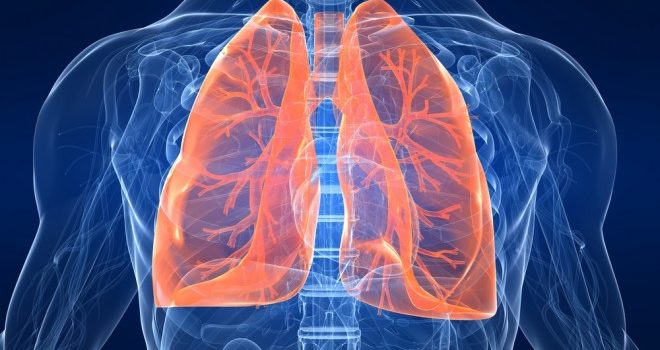


Asthma has baffled doctors for ages. Until recently it was widely accepted that asthma was just one disease. That is no longer the case. Asthma is now being thought of as a collection of conditions. Each individual case is being evaluated by age, onset, and symptoms. This is letting doctors create a case by case treatment plan with highly effective results. Eosinophilic asthma is one of these asthma conditions. Eosinophilic asthma is a subtype of asthma. Doctors and researchers are still hammering out the details and how to best categorize the different subtypes, which will, in turn, lead to better and more advanced treatments.
In the past eosinophilic asthma was just a way of saying “increased asthma attack frequency”. It was considered a level of asthma. Now with a more in-depth understanding of the subtype, we know it is its own type. With separate conditions, symptoms, causes, and treatments. This deeper understanding of subtypes has led to new medicines that are revolutionizing how we treat eosinophilic asthma. Eosinophilic asthma is a form of asthma associated with high levels of a white blood cell called eosinophils.
Eosinophils can cause inflammation in the lungs. The sinuses and nasal passages become impacted and an asthma attack is triggered. Eosinophilic asthma is similar to standard asthma in that it inflames airways that are in turn blocked by fluid and mucus. This causes spasms in the lungs making it very difficult to breathe.
Symptoms
Symptoms of eosinophilic asthma mock asthma symptoms, with very key differences. Some are more likely to be prevalent only in people with an eosinophilic type of asthma. These symptoms start with wheezing and shortness of breath. It will sound like a slight rasp when taking a small to medium breath. A tightness in the chest will signal a significant asthma attack, followed by coughing and the blockage of airflow. This sounds like a classic asthma attack. Where Eosinophilic asthma differs is the chronic symptoms of sinus infections, such as stuffy nose, nasal drainage, and a reduced sense of smell.
Add in nasal polyps and a greater increase in the frequency of the attacks. There can also be cases of Eosinophilic Otitis media. This is only diagnosed occasionally. It’s an infection of the inner ear caused by eosinophilia and resulting in thick yellow effusion and gradual loss of hearing. sadly it is very resistant to traditional medicines used to treat otitis media, making it a severe condition of eosinophilic asthma.
This can be diagnosed and separated from the standard asthma diagnoses by a blood test. The results in an eosinophilic asthma sufferer will be higher than normal levels of eosinophils in the blood. Eosinophils, the major inflammatory cells involved in asthma pathophysiology, is considered a biomarker for asthma.
Treatments For Eosinophilic Asthma
While the majority of patients with asthma can be treated effectively with the proper use of maintenance medications, an estimated 10% to 20% of patients are obstreperous to current standards of treatment. This includes oral corticosteroids for patients that are considered to have severe eosinophilic asthma. The treatment now with the advancements made, still is not that different than one would expect. There is a two-phase attack on eosinophilic asthma, rescue, and maintenance. The goal of this 2 front attack is to set up long-term symptom control, maintenance of normal activity levels, all while minimization of the risk and frequency of asthma attacks. This method will allow a reduced risk and effect to asthma attacks as well.
Treatment is individualized to fit the patient asthma subtype. This is done by severity and the goals of the patient. Let’s start with the rescue medications. Rescue medications are employed infrequently for quick relief of asthma attacks. As the name infers this is designed to “rescue” the patient from obstructed breathing and asthma attacks. The most effective and widely used rescue medication is a short-acting beta-agonist. The most widely used and prescribed of these drugs is albuterol. This would be in conjunction with Oral and injectable corticosteroids for a short-term rescue, typically for 3 to 10 days.
The next phase of attack is maintenance. Maintenance medications are used regularly and continuously for effective long-term control of asthma. They are used to control symptoms and reduce the risk of future exacerbations only. They do not provide any type of immediate attack relief. Early initiation of daily maintenance medication has been associated with improved clinical outcomes. Based on the asthma severity, your doctor will set up a maintenance program for you. This is all based on the eosinophilic asthma severity at the time of diagnosis. Therapy can be subsequently stepped up if the disease is uncontrolled. At the same time, stepped down to the lowest level that achieves the goal of your doctor.
Causes
While we have no real cause for eosinophilic asthma, and nothing that stands out has been identified, we do know other forms of asthma are triggered by allergic responses to environmental factors. These factors include a range of things such as pollen or pet hair. We do know eosinophilic asthma does not develop in this way. High levels of eosinophils can develop when the body is fighting off parasitic infection.
Scientists are still unsure of what causes these levels to spike in cases of eosinophilic asthma or the natural link with asthma. The two disease act very much the same but perform in vastly different ways.
The Final Thought
This is not a pleasant disease. It is more complicated and much more severe than standard asthma. You should seek emergency care if your quick-acting medication provides no relief after 15 minutes of your attack.
If you are having difficulty speaking or walking at a normal pace, your lips or nails are turning blue, if you are taking more than 30 breaths a minute or if breathing causes nostrils to flare and the throat and ribs to feel stretched, don’t take the chance and just seek urgent care.










